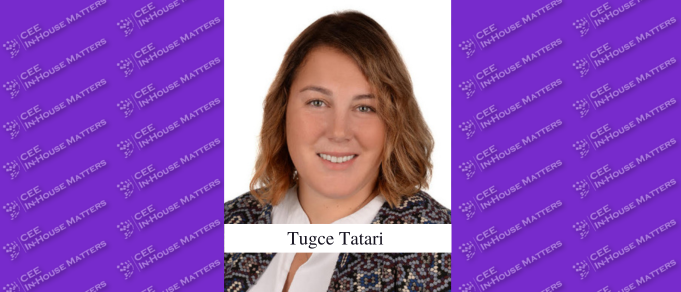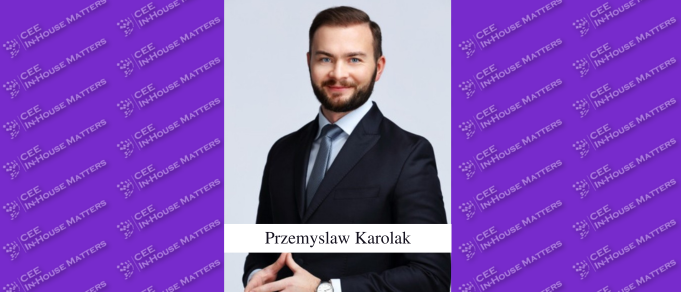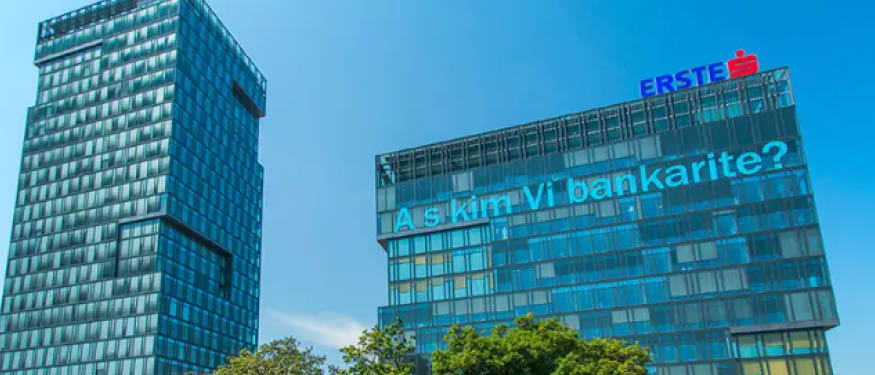“The pandemic has made everyone aware of the critical need to digitalize their business – irrespective of their industry,” explains CMS CEE Managing Director Dora Petranyi. “With the rise in digitalization, not just in business, but even in our daily lives, we also see an increased awareness of the importance, and impact, of the infrastructure that supports these digital trends.” And this increased awareness of the importance of the infrastructure being used is complemented by the pandemic drawing people’s attention to climate change as well, with Petranyi noting: “We all saw many maps of various regions of the world suddenly becoming cleaner and cleaner as the lockdowns were being implemented – it was only natural for it to emphasize the link between human activity and its impact on the environment.”
Petranyi notes that, “as TMT professionals, we’ve been talking about the importance of this infrastructure for the past 20 years, but now others are catching up as well.” This is why the firm dedicated itself to putting together the Digital Horizons report, which, according to CMS Co-head of CEE Technology, Media & Telecommunications Eva Talmacsi, “was one of the main CEE thought leadership publications last year and it explored our region’s digital future.” Talmacsi explains that the report “was based on a client survey and client interviews that we ran over the summer of 2020, and it covers a range of topics around digitalization, including businesses’ digital agenda, CEE’s digital readiness, investment plans, regulation, and risk. The report also contained four mini-reports offering a deeper dive into AI, data & ethics, digital infrastructure, and smart industry – plus a quick stress test for clients on how future-ready their digital agenda is.” She adds: “We also ran a series of live events featuring fireside chats with various clients, after its release, around the different topics, as we wanted to engage with our clients and solicit their views on these future-facing issues.”
A critical takeaway of the report for Petranyi is that we are seeing an ever-increasing intensity of data transfer and a lot of effort is being put into enhancing the infrastructure to facilitate it. “Inevitably, when you talk about 5G infrastructures or large data centers, there is a considerable increase in electricity usage and electromagnetic output involved,” Petranyi explains. As a result, according to Talmacsi, “a future-proof digital infrastructure goes hand-in-hand with the energy transition,” with the “expansion of the digital economy already posing challenges for the environment, as the inefficient use of equipment is creating unnecessary waste and costs. According to some scientific data, eight out of ten servers are idling while still consuming energy. Therefore, aligning supply and demand is key to the future of the next generations.”
Embracing Tools for a Sustainable Future
As Talmacsi puts it, “the COVID-19 pandemic has shown the central role that digital infrastructure and technologies play in our modern societies and economies, and we are very well aware that digital technology will shape the future in new ways and in various directions.” With such immense pressure to meet the demand for data transfer, is there room to think about sustainability? According to the two CMS Partners, yes there is, with Talmacsi pointing out that the futureproofing of digital infrastructure is currently a major theme of both regulators and the business world alike. Petranyi also points to “a very positive trend of both more and more infrastructure providers and also end-users, such as Netflix and the likes, embracing the need to think about zero-emissions and a sustainable future.”
The fascinating aspect here, according to Petranyi, is exactly that – it’s on all parties involved to make it work. “The infrastructure side of things seems obvious, but it does come down to the end-users to figure out how to minimize their footprint as well,” Petranyi states. As an example, she points to the mobility sector and explains that automated cars most definitely should be looking to use renewable energy and use 5G technology, with the hope of mobility corridors being set up in the EU. And media services that eat up a huge bandwidth should be looking at employing blockchain and having their data transmitted from the nearest available spot, rather than transmitting all their content from one location to everywhere across the world. Healthcare providers too should obviously minimize their footprint by switching to cloud-based solutions, as opposed to paper-based or physical hardware ones and, again, should make sure that their infrastructure uses renewable sources and blockchain to optimize their network.
How does blockchain work and how can it help? According to Talmacsi, “a foundational blockchain layer could be established, on top of which other blockchains, also leveraging other applications like IoT or AI, could be deployed for various purposes. Specific examples from the end consumer’s perspective include compliance monitoring (which is a major piece of any regulated industry landscape).” Talmacsi explains that “blockchain enables the tracking of compliance with technology standards. As data is recorded on the blockchain, automated, and even smart reporting and monitoring services can be enabled, bringing together a cobweb of data sources such as satellite imagery, remote IoT sensors, engineering reports, and regulatory reports. It cuts out a number of other layers and improves efficiency.”
Where Do Lawyers Come into the Picture?
Lawyers have a lot of work ahead of them in terms of supporting this evolution, according to Petranyi. First, there are a lot of elements still to be worked out, in terms of all the network sharing questions, with use cases for 5G getting quite tricky at times. Second, “you need the spectrum for 5G and we still have those tenders ahead of us,” the CMS Partner adds. Third, there are questions about the interconnectivity between players and even the reliability of the data transfer that impact both businesses and consumers, with Petranyi giving the example of e-prescriptions being introduced at the outset of the pandemic: “This was a major step ahead, but it raised a lot of questions on how to use them, what are the regulatory impacts, and so on.”
“A lot of these evolutions imply changes of processes and how work is done and, unsurprisingly, that always brings up questions,” Petranyi says. “It can be as simple as a labor law issue, it can have an impact on an acquisition, and increasingly, we’re seeing ESG questions come up even in financing talks – which I believe will give the concept of sustainability a whole new meaning on the long run.”
Talmacsi echoes the increase in ESG-related work: “The growing awareness of ESG factors in the M&A and corporate ecosystem, in my view, will give rise to an increased focus on ESG values and, over time, ‘an ESG due diligence’ will become a standard part of a target’s due diligence review by the investors and their advisory team.” According to her, as shareholders and the whole business ecosystem expect especially publicly listed or larger private companies’ management to focus on sustainability, to become more inclusive/diverse, and to act in a socially responsible way, in the context of a new transaction, these ESG elements will be seen to constitute financial and/or reputational risks. “Therefore, these aspects will be thoroughly examined before the signing of the transaction documents, to pre-empt any potential legal risks or lawsuits,” Talmacsi predicts. What will such a due diligence process look like? “Well, we will primarily check the compliance of the target with national and international regulations and assess the environmental, social, and corporate governance fabric of the target company. That being said, each industry will also add its own spin on the general principles and areas of review.”
Keeping Up with the Times
“I think future-facing lawyers should be keeping up with tech developments,” says Petranyi. “We can’t all be experts in everything of course, but within CMS we have focus groups that we can reach out to for specific expertise when a need comes up, and that is what I see with many of our competitors as well.” How do you do that when you are talking about lawyers – not generally recognized as the most tech-savvy professionals? According to Petranyi, “it very much needs to be a cultural element for firms, while also looking at how we make our lives more effective by using better tech – I see that as a strength of CMS, both globally and in our region.”
And Petranyi believes that committing to sustainability as a firm itself is also critical. “CMS is one of the first firms to sign up to a net-zero emissions by 2025 goal, and we are diligently measuring our progress on that front,” the CMS Partner says. As part of that effort, the firm is “modernizing its infrastructure and introducing new solutions such as managing legal services or information gathering. It has even introduced AI technology to conduct an audit of its contracts across key sectors and areas of law, to identify trends and opportunities for refinement in clauses associated with climate change and ESG – all aimed towards a more sustainable model.”
These steps will likely become the norm for firms everywhere, according to Talmacsi, with questions related to sustainability already coming up in procurement processes. “An ESG push is already very much a reality – and I believe it is here to stay.”
This Article was originally published in Issue 8.9 of the CEE Legal Matters Magazine. If you would like to receive a hard copy of the magazine, you can subscribe here.
















